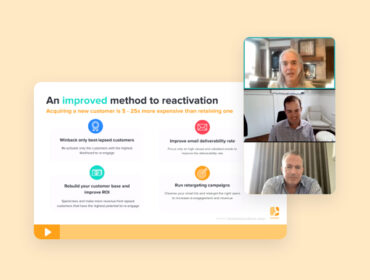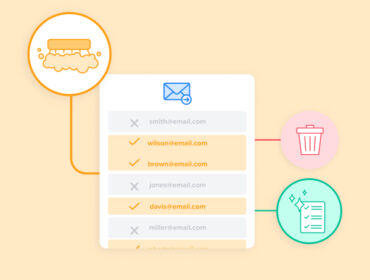Identity resolution: Everything you need to know
Whether you’re a small, new business or a large, well-established organization, understanding how consumers engage with your brand is challenging. Unfortunately, interactions between your business and target audiences are fragmented across a sea of devices, platforms, and channels, making methodologies like identity resolution a critical component of today’s marketing efforts.
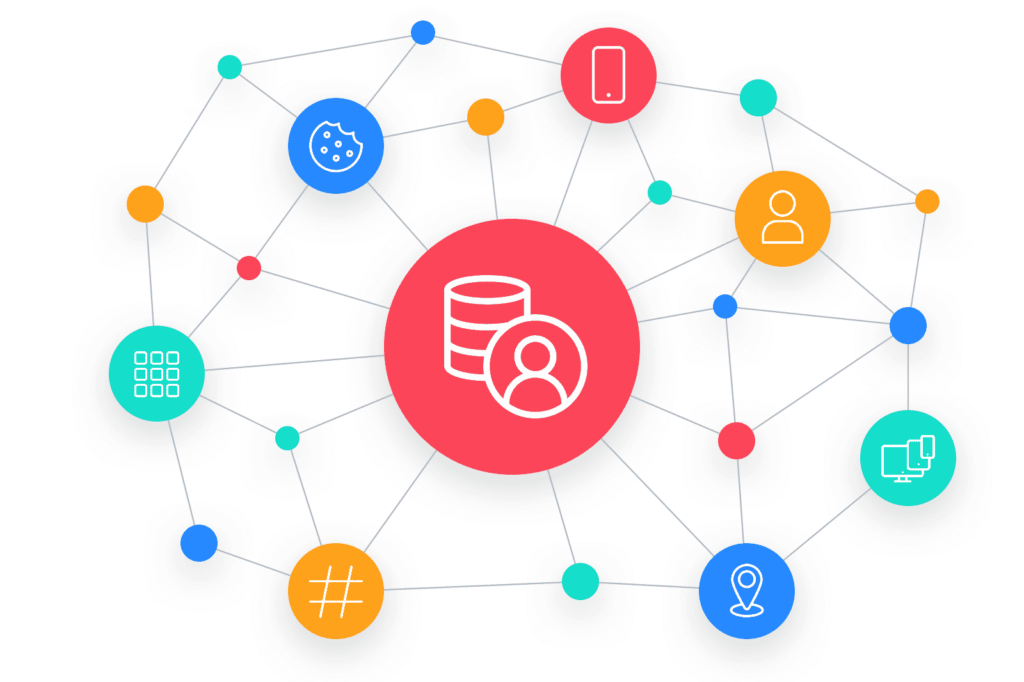
With this comprehensive explainer, you’ll come away with answers to all your basic identity resolution questions, like:
- What is identity resolution?
- Why does identity resolution matter?
- How can identity resolution help me and my business?
- How does identity resolution work?
Let’s get started.
What is identity resolution?
Identity resolution is the process by which customer interactions across platforms, channels, and devices are connected to a single customer profile. Marketers can use this customer profile, often referred to as a single customer view, unified customer profile, or 360-degree customer view, to improve interactions between the business and its customers.
Why does identity resolution matter?
You might be thinking, “Why do I need to reconcile all these interactions anyway? Does it matter if I have a comprehensive customer profile?”
According to Salesforce, 75% of customers expect consistent interactions across departments. 52% of customers expect offers to always be personalized. Furthermore, 66% percent of customers expect companies to understand their unique needs and expectations. Unfortunately, a whopping 66% of customers say they’re generally treated like numbers.

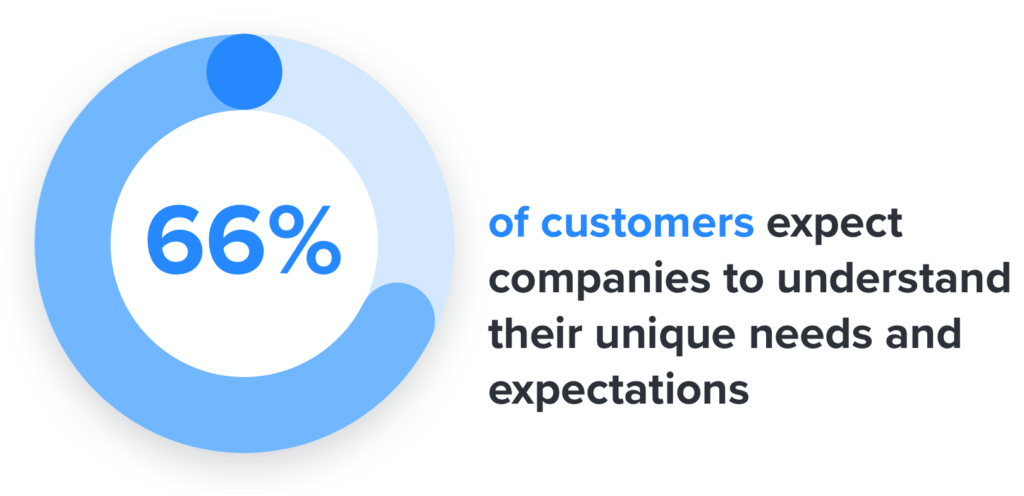
To ensure success in today’s fragmented, digital-first world, marketing teams must work toward unifying their customer view. Doing so helps deliver more consistent messaging and improved customer experiences across all customer touch points.
How can identity resolution help me and my business?
Identity resolution unlocks revenue-generating opportunities for businesses. With identity resolution, you can:
Create a single customer view
Identity resolution improves customer data quality by removing redundancies, unifying data, and creating a more accurate view of your customers. With a holistic view of your customers, you can better understand their interests and needs and how to engage them.
Curate personalized experiences
With identity resolution you can tailor experiences to customers’ specific needs, interests, and behaviors. Rather than engaging your customers with vague messaging or offers, you can deliver value at every stage of the customer journey with more relevant, personalized experiences that help drive business and improve customer loyalty.
Improve ROAS
Identity resolution improves customer loyalty and ROAS as it refines your targeting and suppression efforts across audiences and channels. Equipped with identifiers like hashed emails and MAIDs, you can reach the right customers in their favorite channels for.
Create robust customer segments
By reconciling identifiers and creating a single customer view, you can create more accurate and robust customer segments that reflect a customer’s growing interests and evolving needs. The more precise the customer segment, the better performance will be across marketing initiatives.
Build a first-party identity graph
Businesses may choose to build their own first-party identity graph to navigate changes in tracking and privacy by leveraging their own customer data, like userIDs for instance. With an identity graph built upon proprietary data, businesses can simultaneously secure greater control over their data while driving improved campaign performance and customer experiences.
How does identity resolution work?
Identity resolution is only possible with an identity graph. An identity graph is a database containing identifiers like hashed emails, mobile IDs, cookies, device IDs, customer IDs, and other information linked or associated with an individual customer. With a robust, accurate, and up-to-date identity graph, businesses can unify their customer view to deliver improved marketing experiences across devices and channels. Let’s look at an example of identity resolution in action.
Logged-out, anonymous activity
Imagine that a brand called Terra sells outdoor recreational equipment. And Ryan, a prospective customer, is planning a camping trip to Yosemite National Park. Ryan visits the brand’s website and checks out some tents and sleeping bags. Later that day, he downloads the app and puts a pair of hiking boots, a backpack, and a raincoat in his cart. Ryan does not, however, create an account nor does he complete the purchase. Since Ryan hasn’t created an account, all his interactions with Terra’s digital properties are anonymous.
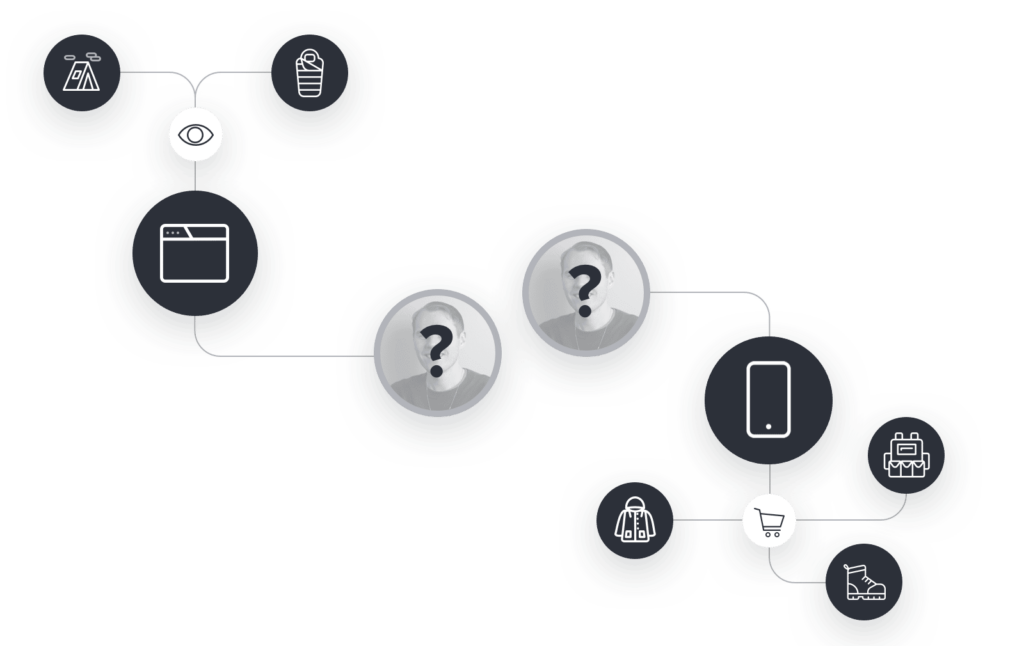
Logged-in activity
A day later, Ryan gets on his laptop to finally purchase the items he needs for his trip. He decides against the raincoat and backpack, but he places a tent, sleeping bag, and hiking boots in his cart. He then creates an account with his email, provides his name and shipping details, and buys the items. Because Ryan created an account, Terra can now link his email to a userID and purchase details.
But what about the actions Ryan took before creating his online account? What happens to those data points?
Unified, logged-out and logged-in activity
Without identity resolution, Ryan’s identity and actions exist in two forms: as a known and unknown user or as a logged-in and logged-out user. While it’s the same person interacting with the brand, there’s no way to reconcile logged-in and logged-out activity.
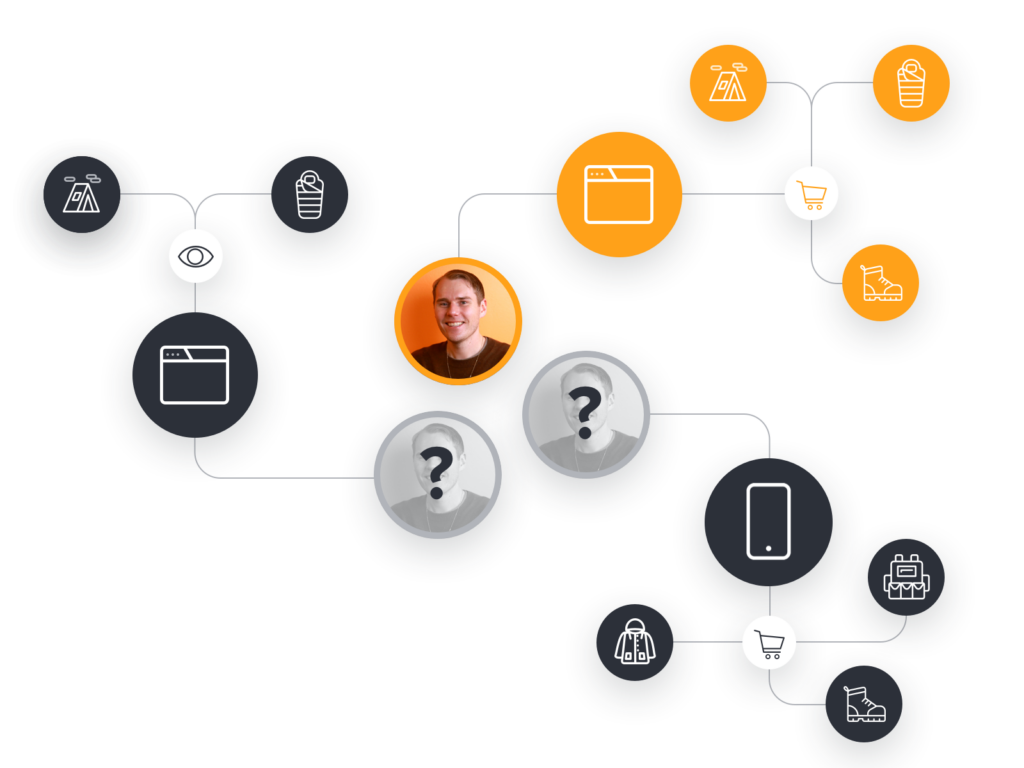
However, with identity resolution, Terra can unify Ryan’s logged-out and logged-in interactions with its brand across channels, platforms, and devices. For instance, Terra can then use interest-based data, like Ryan’s interest in the raincoat and backpack, to inform the types of products featured in their marketing newsletters rather than an email full of products he doesn’t care about. Or, instead of reaching Ryan with general ads for their brand, Terra can target him with ads for the raincoat or the backpack on his Android phone, across Facebook and the open web, for example.

Choosing the right identity resolution partner: A checklist
These days, many companies are touting identity resolution as one of their core offerings, including social networks. With so many solutions to choose from, it can be difficult to discern which solution is right for your business. To help you in your search, we’ve curated a checklist of best practices and considerations.
Run a match test
A proof of concept (POC) or match test is one of the most commonly used mechanisms for vetting identity providers. This process involves matching and verifying a brand’s data against an identity provider’s to secure a match rate. A match rate measures the number of users an identity graph provider can match, discover, and analyze. Once the match test is complete, check the accuracy of the data you receive. You don’t want to partner with an identity provider that has the scale but lacks accuracy. Furthermore, ensuring that identity providers support relevant regions — like the United States vs Canada or Europe, for instance — is also critical.
Understand matching methodologies
Identity resolution solutions use deterministic and probabilistic matching to unify customer data. Deterministic matching is the gold standard since it uses identifiers, like email addresses, to resolve audience profiles with high accuracy. While probabilistic matching isn’t as accurate, as it leverages various data points and algorithms to resolve identity, it does provide scale. Some identity providers claim 100% deterministic matching but it’s essential to dig deeper to understand how they define “deterministic” matching.
Additionally, understanding if providers match data and cluster identifiers at the individual or household level is critical. While identifying and clustering at the household level offers the greatest scale, it may not meet your needs like, if you need to identify unique individuals for instance.
Confirm data sources and acquisition recency
For accurate identity resolution, you need an identity provider with access to rich truth sets that connect your data to stable online connections like hashed email addresses. Furthermore, ensuring your prospective identity providers regularly refresh offline connections, like demographic data, is crucial. This type of active validation of online and offline identifiers helps brands improve data matching without sacrificing reach.
Maintain ownership of your data
Your customer data is exactly that — yours. Ensure you’re partnering with an identity vendor that gives you transparency and access to as much data as possible.
Check if real-time access is available
It’s essential to meet your customer at the right time, with the right message, and in the right channel. An identity vendor that provides prospect and customer data in real-time can help you meet customer needs and achieve effective business results.
Deepen customer relationships
Identity resolution can transform your business by helping to improve customer touchpoints and experience throughout the entire customer journey. With identity resolution, businesses can deepen their customer relationships to drive engagement, brand loyalty, and improve retention. To learn more about how your business can implement and benefit from identity resolution, contact us today.

